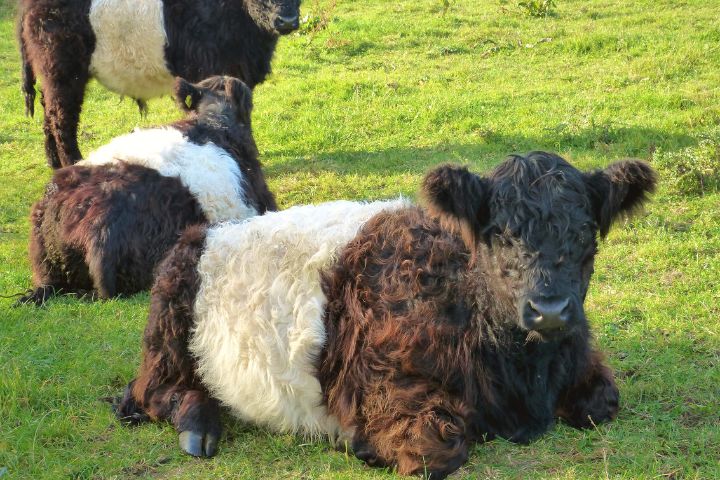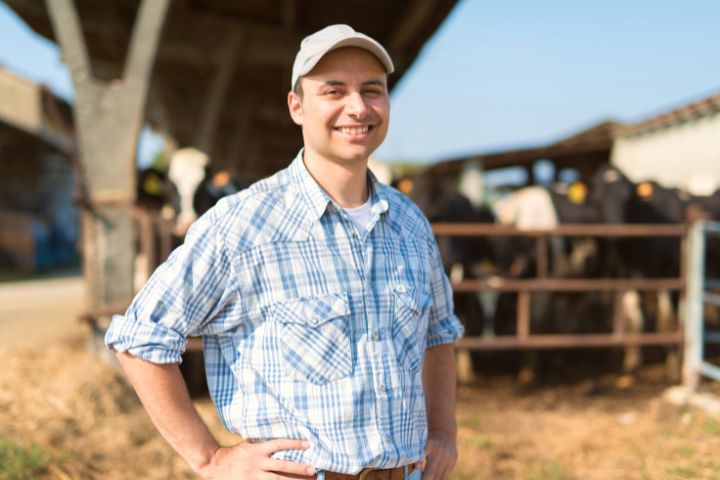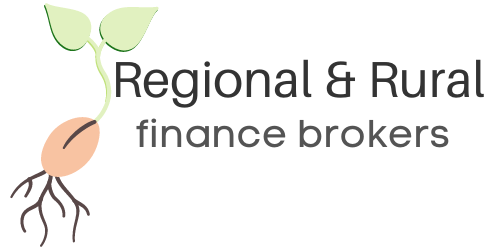Miniature Cow Breeds Australia | Ideal for Hobby Farming
Mini cows are super cute, but they’re also practical for homesteaders or farmers who want to raise cows as a passion project rather than for a profit. These cows are easy to manage in small properties such as hobby farms and relatively cheaper than regular ones.
They produce just enough milk or beef for six people, which is perfect for a family, especially if they like cow’s milk over goat’s milk.
Let’s look at some of the most popular mini cow breeds, with some interesting information about them that will help you in your homesteading journey.
You may also be interested in: Livestock Finance and Rural Mortgage Brokers
Different Breeds of Mini Cows
Before learning about the different breeds of mini cows, let’s see what is considered a miniature breed. These breeds are 120cm tall or less when they are 3 years old. Normally, they would range around 80cm to 120cm, making them about one-third the size of regular cows. (Still taller than miniature horses!) Miniature cows only need 2 to 3 acres of land to graze.
Miniature Belted Galloway
Affectionately known as the Belties, they are a very hardy breed. The Galloways came from the southwestern part of Scotland now spread across different parts of the world. Belties have a coarse double coat that repels water, which is perfect if you live in a rainy part of Australia. Their undercoat is mostly wool, which keeps them warm during the cold.
Belted Galloways have a solid colour with a white belt around the midriff, hence their name. When they are mature, they stand at 120cm.

Some benefits and facts about Belties:
- Easy to raise. Belties are not picky with their feed. They can digest some types of flora that are not digestible; they can survive in even not ideal situations. Belties are resistant to many types of diseases, but you must have regular pest control and vaccinations in place. They should also have a shelter to rest, fresh water, feed, and good-quality hay.
- They are the oldest naturally polled beef cattle breed in the world. This means that they are naturally hornless, so you don’t have to spend money or labour to de-horn or tip the horns of your mini cows.
- Belties can make you an easy profit. They don’t need much feed for each kilogram of weight that they gain. Additionally, their beef quality is excellent, as it is lean and marbled, putting it in high demand. This is what makes it profitable.
- They have a double coat. They are protected from the elements and are also able to repel water. This coat also translates to lower feed costs during colder seasons because they need less food to maintain their body condition. The double coat also helps with the Australian heat.
Australian Lowline
Australian Lowline cattle were bred from the established Angus herd in 1929. The high-growth rate cattle were known as High Line, while the low-growth rate cattle were known as Low Line. After 15 years of selective breeding, the Low Line herd stabilised at 30% smaller.
Low Line cattle have a quiet temperament, are small, and are naturally polled. They are affordable compared to other breeds for small farmers while providing just enough milk for their families. Cows are around 100cm, while bulls are 110cm at the hip.
These cows can also be raised for beef, as they produce tender, evenly marbled, and very tasty beef when fed grass. The cattle can survive in a wide range of environments, from the snowy areas of Colorado (USA) and New Zealand to the more topical areas such as North Queensland.
Miniature Herefords

The origins of this cattle breed have its roots in Herefordshire, England. The miniature Herefords are descendants of the pure Hereford stock that was selectively bred since 1970. Miniature Herefords were bred for hardiness, temperament, and good meat quality. These mini cows are a small chunky version of the regular Herefords, with short, thick, and muscular legs.
They can survive in various climates and be kept in all parts of Australia. They do not have any special needs beyond the usual care for cattle.
Benefits of getting miniature Herefords:
- Quality of meat. The meat yield and quality from the miniature Hereford are superior to other breeds. This makes minis a profitable investment.
- Easy to raise and handle. Since they are small with a quiet nature, farmers with no livestock experience can also raise mini-Herefords. They are also perfect for children who want to learn how to care for cattle.
- They don’t need much space. These minis don’t need much space to be comfortable in their shelters. They also don’t eat much food. This is why they are good backyard pets and can even help with getting agricultural tax-exempt status.
- They’re cute! The Hereford is one of the most aesthetic breeds, and many people like them because of their looks.
Dexter Mini Cow
Modern Dexters have ancestry all the way back to a 1750 herd of Irish mountain cattle that was gathered by a friend of Lord Hawarden, whose name was Mr. Dexter. The cows were descended from small Celts cattle in ancient Ireland. Now, Dexter cows are still widely loved by all farmers, weighing 450kgs and being 120cm in height. They are usually black, but you would find one with a dark red colour.

Some facts about Dexters:
- They have a strong maternal instinct. Dexters are very good surrogate mothers and will accept 4 or more calves at the same time. They are known for easy calving; however, they calve when they’re very old, sometimes at 20 years old.
- You can have more Dexters per acre. Dexters are a little smaller than other mini cow breeds so you can keep more in a smaller space.
- Dexters are well-suited for dry areas. Dexters are perfect for Australian farms as they are adaptable to dry areas. When grass is scarce, they can survive on hay. You can also give some grain or concentrate pellets during milking time as a treat. Your Dexter cows need lots of clean water and food for good milk production.
- Dexters are often kept for milk or beef, sometimes even both. These cows are known for their dual purpose of providing milk and beef. This breed is renowned for its milk production and with good reason. Although they are smaller, they can produce up to 20 liters of milk daily.
Mini Highland Cows
Mini Highland cows are known for their small size and very fluffy and soft coats. They came from the Highlands of Scotland, which makes them adaptable to thrive in cold weather and lush pasturelands.
Highland cows have shorter legs and smaller heads than other mini cattle breeds, ranging from 91cm to 106cm in height. You would see these cows in shades of black, brown, red, silver, white, or yellow.
Mini Highland cows are natural-born lawnmowers who love to naturally snack on grass. These cows also make the perfect pet companion, with their sweet temperament and less intimidating than normal cows.
These cows offer lots of benefits for your small farm, such as producing a manageable about of milk, so there is no wastage. They are docile creatures and do not need much upkeep or maintenance, making them an ideal cow for a hobby farmer who’s new in the game.
Additionally, your Highland cows can handle the cold temperatures of Australia, especially during June and July. They take up very little space, so even farmers that live in urban or suburban areas with little land can raise miniature Highland cows.

Frequently Asked Questions
How much space does a mini cow need?
You will need just ½ to 1 acre of land for each cow, and since they are mini, you will have less manure to clean. Mini cows are comfortable in a smaller space, but make sure they have a good shelter where they can play and sleep.
What is the smallest mini cow breed?
While all minis are well, small, there is the smallest mini cow breed. This is the Vechur cow, which is often found in Kerala. They do not produce much milk, but it is very tasty and filled with nutrients. These cows do not need much feed to produce milk, so you would often see them in rural or poor areas.
Can I keep mini cows as a pet?
Yes! Mini cows are becoming very popular as household pets, especially Herefords. Not only are they adorable, these mini cows are gentle and kind, so they are well-suited for families with young children. Mini cows are like a bigger version of a dog, with fluffier coats so you can pet and cuddle with them. Bonus, you don’t need much space to raise them too!

